
..........................................................................................................................................................................................................
il ne passerent pas
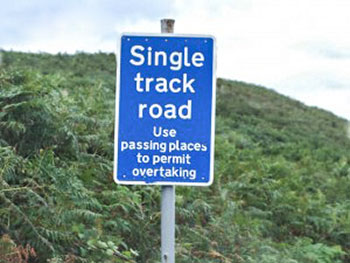
we are once again at the beginning of fèis ìle otherwise known as the islay whisky festival. for those unfamiliar with the the needs of the whisky aficionado, let me make it plain just how irregular their behaviour can often appear.
it has been my practice for well over 15 years to arrange distribution of the local newspaper every second saturday morning, principally on the basis that i live but a mere five minutes from the office. though hardly an onerous task, it does involve arising at 07:10 when i'd really rather stay in my bed (a honed athlete has to rest, right?). on my way up bowmore main street, i have sight of the main gate at bowmore distillery and on saturday of this past weekend, it was obvious to note a sizeable queue outside said gates at 07:45, despite the distillery not opening for business until 09:00.
it transpires that, though bowmore distillery's open day for the festival is not until this coming wednesday, they were apparently due to put their festival bottles on sale as of saturday morn. hence the queue. though i'm sure i have no real need to labour my point any further, because it's me, i'm going to anyway.
bruichladdich distillery's open day is always held on the festival's first sunday, with the gates opening at either noon or 1pm (i'm not actually sure). as is our wont of a sunday morning, the recently coagulated g.c. ristorante debbie's cycle club convened outside the hostelry at 10am, ready and willing to do battle with the admittedly benign sunday morning elements. already, before even 10am, there was a string of vehicles parked from one end of bruichladdich village to the other, while the tables and chairs outside debbie's were densely populated with individuals patiently and not so patiently waiting for the blue gates to open. and most of them were still there on our return.
for those of you who have not yet visited bruichladdich, let me point out that, other than debbie's, the distillery and a pleasant outlook over loch indaal, there's not a whole lot going on. i do not deny for one instant that the afternoon in the courtyard, despite close similarities with carrying a dram of whisky on london's underground at rush hour, provided amiable and varied entertainment, but all this is in the name of whisky.
the festival will end next saturday at ardbeg distillery and the lure of the amber nectar will result in a vast increase in the island's population over the intervening days. and a surprisingly large number of these visitors have arrived not only in very large motorhomes, but in cars and on bicycles. it is the relationship between the latter and the former that i intend to examine in the following rant.
i would certainly be amongst the first to argue the case that as cyclists, we have every bit as much right to be on the road as those in motorised vehicles. however, there is no denying that even honed athletes such as ourselves tend to be a tad slower than motor vehicles, often resulting in us holding up traffic. that is precisely the situation that i viewed when en-route to deb's for lunch on saturday. as i reached a road junction at bridgend, a cyclist rolled past followed (slowly) by several cars. i was easily able to catch up the last of those cars and i'd to sit behind it at a rather slow pace until leaving bridgend village.
i have no real problem with cyclists riding at whatever speed is suitable to their needs or ability, but there were at least two occasions when said cyclist could have briefly pulled off the road without need of stopping completely to allow the cars to pass. this is not a situation that is exclusive to islay; many roads all across the highlands and islands of scotland are singletrack and feature large blue signs advising that passing places should be used to allow faster moving traffic to pass.
when g.c. ristorante debbie's are cycling en masse, we are simply playing on our bikes. we're not going anywhere important, we don't need to be there at any specific time and we sure as heck have no right to hold up vehicles which may be driven by those who may well be working. this is an agricultural island and people often need to be somewhere at specific times, seven days a week. we use the passing places. if you're on holiday on your bicycle, you're not working, so do the decent thing and pull over to let following motor traffic pass whenever it's safe to do so.
yes, it would be wonderful if oncoming cars did likewise if they reach a passing place before you/we do, but it's far more prudent to expect that this will simply not happen. i'm not aware of any instances of road-rage on the island in recent times and i'd quite like it to stay that way, as i'm sure would the residents of other remote locations. it only takes a matter of seconds to pull into a passing place and let trucks, buses, cars or motorhomes by; having to do so frequently might well be a bit of a pain, but that is as nothing compared to the pain you might suffer if someone runs you off the road.
i know i say this pretty much every year, but on current evidence, it seems that it bears repetition. do the decent thing. rant over.
monday 29 may 2017
 ..........................................................................................................................................................................................................
..........................................................................................................................................................................................................and they call it progress

several years ago, derek mclay at wheelsmith in larbert, a scottish town sited between edinburgh and stirling, but definitely closer to the latter, sent me a pair of wheels for review. these were sent by a carrier (that shall remain unnamed), but just to frame this situation in terms that might make a tad more sense, the principal islay-mainland carrier has its depot at hillington industrial estate in glasgow, around thirty miles from larbert.
your logic and my logic would dictate that the carrier collect the wheels from derek and drive through to hillington in order that they be placed on a truck headed west to islay. but of course our logic bears no resemblance whatsoever to that of britain's carrier network, which is why we should presumably be not at all surprised that the wheels did, in fact, head south to leeds, where they were sorted before being subsequently sent north to (you've guessed it) hillington industrial estate. i have no idea whatsoever how that makes economic sense, but somehow, it must do.
domiciled on an island with a relatively small population, we are heavily dependent on carriers and our regular ferry service. with few exceptions, everything in and everything out of islay has to travel on the back of a truck which, in turn, has need of driving aboard a calmac ferry. it has been ever so, and is disappointingly open to the vicissitudes of britain's carriers. though we're well used to checking, very rarely does free uk carriage include the highlands and islands. not for the first time have i refrained from ordering a modestly priced item on discovering that the carriage cost was well in excess of the purchase price.
the postal service, however, is far more equitable; it costs exactly the same to post an item to islay as it does to aberdeen, lewis or london. unfortunately that hasn't stopped one or two online retailers from adding a postal levy to anywhere that doesn't constitute the uk mainland.
you can therefore understand the joy and relief experienced by islay's local velocipedinists and doubtless most of scotland's west coast when we discovered ireland's chain reaction cycles. not only did they offer free postage, but pretty much everything arrived in around two days, every bit as quick as prendas in dorset. this was something of a mercksend after endless problems of trying to have items delivered from wiggle, who, despite offering worldwide delivery, refused to send a pair of tyres to islay on the basis that they were too heavy.
delivery of bicycle bits sent all the way from doagh in county antrim and arriving on islay in such a short space of time was all but unheard of.
and then much to our great dismay, chain reaction cycles merged with wiggle and shifted the bulk of their warehousing and distribution from ireland to wolverhampton. according to the newly combined wiggle crc, "we have concluded that, by concentrating the majority of our distribution through our warehouse facility in Wolverhampton (it) will help us retain our position and remain competitive in the UK as well as increasingly global markets."
i might well be inclined to argue that this was something of a retrograde step. having suffered a puncture last weekend and finding myself with few spare inner tubes in the bikeshed, on tuesday past, i ordered a number of appropriately sized tubes from the chainreactioncycles.com website, admittedly around tea-time. on friday, i received an e-mail stating that the items had been despatched, but on returning home from my saturday bike ride, i was most disappointed to learn that no delivery had been made of my chain reaction order. four days after ordering i was still bereft of inner tubes. assuming despatch from wolverhampton, google offers a distance of 280 miles to glasgow a trip taking four and a half hours via the m6 motorway.
i wonder if mr wiggle can offer a reason as to how the improved service alluded to above, fits that description? particularly now that the irish sea presumably no longer figures in the equation. and before you ask, no, this isn't the first time it's taken so long since the merger.
sunday 28 may 2017
 ..........................................................................................................................................................................................................
..........................................................................................................................................................................................................rapha classic crochet mitts
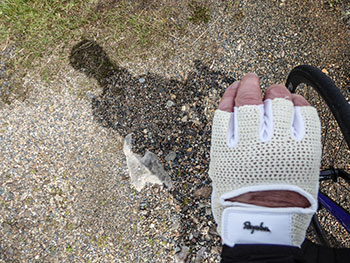
by this time next year, islay will have its ninth single malt distillery. currently under construction at ardnahoe on the road to bunnahabhain, in addition to the distillery at craighouse on jura, attendees at next year's islay whisky festival (fèis ìle) will have an extra tour in which to participate. obviously enough, while the buildings are being built, there's not much to see in the way of whisky production, so ardnahoe have taken premises in islay house square at bridgend in which they've opened a shop cum visitor centre for the time being.
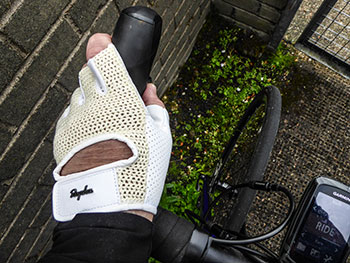
with yesterday being the unnofficial opening of this year's festival, ardnahoe invited the great and the good to a modest celebration in the square. it appears that i fit into the latter category, having been asked along for a dram. naturally enough, as a teetotaller of long-standing, i refrained from that on offer. as part of the launch, hunter laing, owners of ardnahoe, unveiled what they're referring to as the kinship range, consisting of six bottlings of luxury whiskies from different islay distilleries. should you fancy adding the half-dozen to your whisky cabinet, be prepared to receive very little change from £5,000.
as i have described on previous occasions, friday afternoons are often my time to play hookie from the office and nip out on the bike for a bout of froth supping. on this particular occasion, i stopped off at islay house square to avoid my dram. though debbie's is more than used to incoming cyclists in sportwool and lycra, under the circumstances, i thought it more prudent to dress in a less rudimentary fashion, wearing a pair of rapha fixie shorts over my core range bibshorts, topped off with a classic jersey. and as the icing on the cake, so to speak, i wore a pair of rapha's new classic crochet mitts.
the white ones.
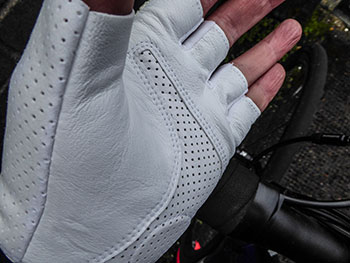
crocheted fabrics first appeared in europe during the 19th century and differ from knitting, apart from the tools used, in that each stitch is completed before moving onto the next. the dutch apparently published instructions on how to crochet in the early 1800s. not unnaturally, given the human need to footer with pretty much anything, there are several different crochet stitches from which to choose such as double, shepherd, french or slip-stitch. common consent would agree that britain produced the highest degree of perfection in the art of crochet, but that hasn't stopped both france and germany claiming to have invented the fabric that now features prominently on the back of rapha's luxury fingerless mittens.
according to the latter's website, the leather palms of these classic mitts feature targeted padding; in other words, minimal to say the least. the style is pretty much what tom simpson would have worn, though i'd be surprised if his reached the level of luxurious softness provided by the current state of the art. i have previously owned crochet-backed mitts on which the latter has been a tad rudimentary, verging on coarse; there is none of that here.
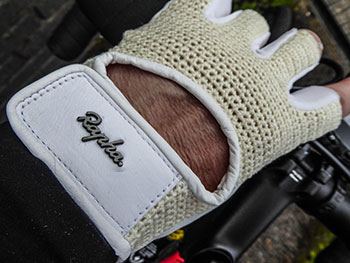
but aside from their sartorial superbity, in the words of jiminy cricket, "there's more". the rapha emblazoned velcro fastening on the back creates an open oval, ready and waiting to create the necessarily identifiable tan-line that we all know and flaunt. it just doesn't get any better than this.
as i wended my merry way from bowmore to islay house square and subsequently south west to debbie's, that minimal padding accomplished far more than you'd ever believe possible. whether in the drops or on the hoods, you'd scarcely notice their existence, apart, of course, from conferring simpson status upon the wearer. sadly, no-one at the ardnahoe launch commented upon their soft, white tommyness, but that just shows how much they know.
rapha's classic track mitts are available in sizes ranging from xs to xl in black, blue or white at a cost of £60.
saturday 27 may 2017
 ..........................................................................................................................................................................................................
..........................................................................................................................................................................................................buffalo on tour

the abattoirenberg forest road, forming part of what is locally referred to as the glen road is not noted for its pristine surface, despite removal of one cattle grid en-route to the abattoir. in years gone by, the road was bordered on both sides by pine trees which, combined with a remarkably unkempt road surface, led to its being named in similar manner to its paris-roubaix namesake. in point of fact, this sector of gravé does not constitute a glen in the strictest sense of topography, but as the road wends its way north to ballygrant each side rears up from the flat, with beinn beigheir, islay's highest point featured on the right.
i am regularly asked by potential visitors whether traversing the principality on regular road tyres (by which i presume they mean 23 or 25mm) is a safe enough venture or should they opt for mountain bikes which may or may not be at their disposal. though one or two of us now principally ride on 28mm, the two sizes previously mentioned are perfectly ok, mostly because it is easier to avoid the potholes and gravel on a road bike than it is in a motor vehicle. however, it should be pointed out that the bicycles on which traversing takes place, while not quite featherweight, are light enough to skip gaily across pretty much anything in their path, including skittish lambs and wayward hares.
though this state of affairs is more than equitable amongst the velo club peloton, there is no doubt that our velocipedes could scarcely be regarded as beasts of burden. the most onerous cargo appended to any of the cycles consists mostly of small bags under the saddles containing the necessary implements should a cheerfully infrequent inflationary malfeasance impinge upon forward motion. the very thought of transporting bales of sileage, livestock, water from a nearby spring or kilograms of unburnished steel hasn't really occured.
nor is it likely to.
but our cycling activity is a far cry from the regions of africa where carbon fibre is all but unknown, the rules of the velominati are but mere western fancy and embrocation but a word that translates poorly into namibian. in regions such as africa, something that leans a bit more towards the sturdy has a far better chance of survival, which is the very reason that world bicycle relief designed and built the buffalo. though it may well be stating the obvious, it's simply not the bicycle that vincenzo nibali would choose for an italian descent.
world bicycle relief development director stephen cromwell, commenting on their decision to take one of the buffalo bikes on a uk tour, said, "We are calling it 'Buffalo on Tour' and we're taking one of our bicycles to a number of cities across the UK to tell folks about the work of World Bicycle Relief." though the tour takes in leeds, sheffield, manchester and bristol, rather obviously the most important locations are those of glasgow and edinburgh on 7 and 8 june respectively. the glasgow visit takes place at the bike station while edinburgh's cms law office is the setting for the east coast visit.
if you'd like to find out more in this, the second centenary of the bicycle, about world bicycle relief's work and check out the bicycle responsible for changing so many lives, click the link below and tell them you're coming. if it's a choice between one more double espresso/cappuccino or donating to a more than worthy cause, i'm sure you can guess on which side your vote ought to land.
friday 26 may 2017
 ..........................................................................................................................................................................................................
..........................................................................................................................................................................................................indurain: relentless. alasdair fotheringham. ebury press paperback. 314pp illus. £14.99

in 1981, pop singer and drummer, phil collins released his first solo album entitled face value and from that album came the particularly successful single in the air tonight. when the single was originally released, the first two minutes or so featured only collins singing over some doom-laden chords and a rhythm provided by a drum machine. however, on hearing the song for the first time, atlantic records' ahmet ertegun strongly suggested that collins add a drum rhythm on the basis that there was no backbeat and that would limit its potential success on radio and in the dance clubs.
of course, we all know now that after those two minutes that drum break wakes up any who may have been subdued by the record's subtle beginnings. though it would be unfair to apportion the record's success entirely to the colossal drum break, there's no doubt it played a significant part in it selling more than half a million copies and receiving a gold record.
that drum break did pretty much the same to pop music as did spain's miguel indurain in the 1990s. the five time tour winner and twice victor in the giro-tour double, at 6ft 2" and 80kg, dominated the grand tours by means of a power that few could keep at bay, particularly in the time-trials. however, the power that such a large rider could produce allowed him also to contain breakways in the mountains by those a tad more fleet of foot than the navarran.
alasdair fotheringham is well acquainted with spain and with the careers of the country's more prominent cyclists, having written tomes on both luis ocana and federico bahamontes. relentless proves to be a remarkably comprehensive biography of one of spain's most recent champions, all the more so, as it seems fotheringham has done so without actually speaking to big mig, at least not specifically for this book.
indurain's ascent to becoming one of the sport's most successful riders while apparently remaining a thoroughly nice fellow, coincided at least partially with my own gathering interest in cycle racing, so many of the early pages in fotheringham's writings are all new to me. and bearing in mind indurain's apparent desire to remain as private a person as his career would allow, that's probably every bit as true for many other readers. yet his early domination of teenage racing was bound to raise at least a modicum of interest.
"The habit of winning without overly celebrating meant that Indurain gave the impression that success was something that came naturally, rather than anything special. That slightly mechanical edge towards beating others in races was something his rivals would find intimidating..."
it is an often uncomfortable fact that the competitive nature demonstrated by many, if not all of the worlds top sports people, is but a thin layer separating decency from arrogance or an otherwise unpleasant disposition. were that not the case, such common lore would foretell, they would be bereft of the killer instinct that made them champions in the first place. indurain seems to have been on holiday when such personality traits were being handed out.
"Juan Carlos Gonzalez Salvador believes Indurain's quietness is hereditary. 'His father was very similar, very friendly and somebody you'd get to like very quickly [...] Miguel's the same..."
the downside to this conservative approach to bike racing, allied to his being probably the last rider you'd go to for a soundbite, is played out across the book's 314 pages. though possessed of a comprehensive index relating to a wealth of facts spread throughout each chapter, indurain's career comes across as almost inevitable. it has been oft said that indurain's five successive tour victories, joined in '92 and '93 by two maglia rosas, epitomised some of the least interesting racing seen over those three weeks in july. not for nothing did his team-mates refer to him as robocop, probably engendered by the visored helmet worn during his time-trial obliterations.
nonetheless, fotheringham has succeeded in authoring an intriguing biography, in the sense that his writing at no time emulates his subject's uniformity. there is much in the way of comment from those surrounding the big man; jose miguel echavarri, eusebio unzue, and brother prudencio indurain, all of whom paint a picture of the great man that equates almost exactly with the common perception. he was undoubtedly fair in competition, often gifting stage wins while maintaining focus on the bigger picture, a feature that won him many friends in the peloton.
"...Indurain was genuinely liked by his colleagues, rivals or not:..."
if the early to mid-nineties are a period of cycle racing missing from your own palmares, this book is an essential coursework. for indurain aficionados it must be considered essential being one of the few to discuss his career in such great detail. but it also succeeds on the level of being an accurate snapshot of a revered era in cycling history.
thursday 25 may 2017
 ..........................................................................................................................................................................................................
..........................................................................................................................................................................................................higher calling road cycling's obsession with the mountains. max leonard yellow jersey press hardback. 325pp illus. £16.99
"But even if you do 'get it', it's not all that clear what you actually 'get'

there is a rationale to be applied here, but i'm not altogether sure that it will provide the results ultimately desired. you see, as a sub-culture of the human race, cyclists, though occupying a small portion of the whole, are something of an oddity. it is, however, an observation that rings true only from the outside looking in; from our point of view, everything appears just ginger peachy; normality rules ok.
but, to return, albeit briefly, to that rational thought process, a group of blokes and/or blokesses dressed to the nines in bright polyester, lycra or perchance sportwool, often old enough to know better and riding on plastic bikes in close formation, probably isn't the sort behaviour one expects demonstrated in public. delving further into this subculture only makes matters worse. an early morning changing routine in village halls, before steaming full throttle across an out and back distance of ten miles or above is surely not normal? and that's to say nothing of those intent on defying gravity ever upwards on bicycles with every extra gram excised when there is actually no real need to do so.
there will be many reading this review who still wonder what all the fuss is about. how does the above constitute a social oddity? isn't everyone else just out of step?
ultimately, that may be the unsaid, unwritten conclusion of max leonard's excellent and well-researched book higher calling. part of that conclusion seems based on a degree of pragmatism. as eccles, from goons was once quoted as saying "everybody got to be somewhere.". thus mr leonard's personal predilection for riding uphill can be logically justified.
"I'm naturally a skinny person, so as a bike rider I'm never going to win a sprint and I'm not built for the cobbled Classics of northern France and Belgium."
and perhaps that's the simplest solution to the conundrum; that those of us who absolutely must ride our bikes, have need of a higher purpose (pun not intended), a purpose that can be most readily equated to our own physical disposition. personally, i used to figure i could climb and to a certain extent that's at least partially true. but the perennial need to plough into rain inflected galeforce winds has brought on delusions of rouleurship
as they say, each to his own.
however, it seems that mr leonard is not entirely satisfied with this simplest of answers and has need of exploring further the desire to ride a bike uphill for as long and as fast as each of us is possible. because, think what you might, it's still not normal behaviour; well, not by normal standards.
max leonard spends the opening chapter atop europe's highest paved road, on the col de la bonette. strangely, for a committed and self-admitted grimpeur leonard does not have pedalling as his principal purpose. on this occasion he has joined the task force whose job it is to keep the upper reaches clear of snow. boiling water for a cup of tea...
"It had taken a long time to heat. We're at 2,715 metres and although that means water will boil at lower temperatures (around 90 degrees C at these heights) the altitude means the gas pressure is low and the stove's flame weak."
he then goes on to demonstrate a grasp of reality by the authorities that perhaps does not match with the distinctly not average velocipedinist.
"They are places that can be said only properly to be there for four or five months of the year. In Europe's highest mountains, if a climb doesn't lead somewhere important ... then most of the time ... it is shut."
of course, the fact that the french authorities deem it prudent to finance the annual snow clearance of several of the country's highest peaks and passes can hardly be listed as justification for uphill bike riding. in mitigation, max leonard makes no attempt to do so. however, in a welcome detour round the ultimate objective of higher calling, he lays to rest the myth that climbs in the tour de france were categorised according to how easily they could be negotiated in a citroen 2cv.
"...it was only upon the race's resumption in 1947 that the mountains were divided into categories. However, this is still a year before the advent of the 2CV..."
despite mr leonard's admission that mountain cycling is amongst his most favoured reasons for riding a bicycle, like most of us, he has at least the perspicacity to realise that those who do so for a living are several orders of magnitude better at it than he, you or i. in an effort to gauge this difference in physical ability, he enlists the expertise of cannondale-garmin (as was) professional and good friend, joe dombrowski.
"Joe, while not a native of the Andes - he's from Virginia - is lucky enough to be good at high altitudes."
however, lest you think max is an obsessive drawn to the sporting and faux sporting aspects of uphill, chapter nine, entitled counting sheep would disavow you of that misapprehension. for my money, this chapter is the book's crowning glory, describing as it does a slowly departing world existing at altitude, one that has little or nothing to do with bicycles. the chapter also allows mr leonard to exercise his undoubted ability as a wordsmith.
"Distant reliefs fade, become silhouettes, and the pale concrete of the Second World War bunkers that litter the desolate ridges starts to shine."
for while we ruminate over the whys and wherefores of selecting the inner ring and one of the rear wheel's larger cogs in the search for legendary status in our own lunchtimes, there are people for whom altitude is a way of life. for them, george mallory's oft quoted reply when asked why he climbed everest, "because it's there", holds a greater level of truth than it did for mallory. and in an increasingly technological and economically obsessed world which includes carbon fibre and electric gears, that way of life has already diminished.
leonard's portrayal in this manner is exemplary.
max's writing style is comfortably self-deprecating, often humorous and a bit of a breeze to get along with. there's a not indistinct possibility that, in setting out to examine the cyclists' reasons for riding up very tall european mountains, he actually poses more questions than provides answers. but, to be perfectly honest, that cheers me no end. i can think of nothing more disappointing to have the essence of grimpeurship defined socially, mathematically or even worse, by the strictures of rational logic.
if there was a definable answer, that it was the butler who actually did it, i'm glad i missed that. in this particular instance, the ride was far more interesting, intriguing and enjoyable than any preconceived destination that may have been expected at the journey's start. higher calling is probably a dark horse for sports book of the year award.
wednesday 24 may 2017
 ..........................................................................................................................................................................................................
..........................................................................................................................................................................................................feedback sports bike tools
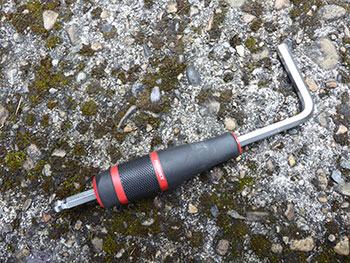
according to common lore, any assemblage of cyclists, no matter whether road or off-road, will contain at least one individual with a predilection for bike fettling. this innate ability can be, and often is, put to great use by the surrounding members of the peloton. any creaking noise that may emanate from the nether regions of your pride and joy will be expertly diagnosed on the fly, usually accompanied by an invitation to drop the bike round at their gaff later for a full service and polish. (i may have exaggerated just a smidgeon.)
this can also be exploited to the full should you happen to suffer a puncture en route; simply appear to be as helpless as you probably are and it will be a mere matter of minutes before the individual in question pushes aside all and sundry to begin removing the wheel and levering off the tyre. of course, it is quite likely that continued floundering such as that described will become tiresome very quickly, leading to the necessity of learning how to fix your own puncture. but, as they say, your mileage may vary.
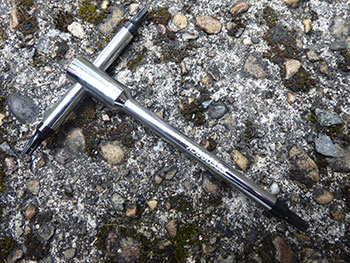
punctures, possibly the simplest of mechanical malfeasances, rely purely on a bit of common sense, a spare inner tube (preferably of the correct size) and one or two tyre levers. pink or yellow are ussually the best. however, the modern bicycle is an often complex beast, requiring not only a range of specific tools, but the savvy to diagnose which particular one to use under each set of circumstances. yet, though there are riders who spend a more than acceptable proportion of their wages on carbon fibre and electronica, few will consider doing likewise on a small, yet compact and bijou toolset.
i have seen folks using bricks to hammer a chain rivet into place, hammer and screwdriver to loosen a bottom bracket cup and a pair of needle-nose pliers to effect less than satisfactory wheel truing. you may laugh, but how many of you have reached for the kitchen scissors when in desperate need of bike fettling? don't deny it.
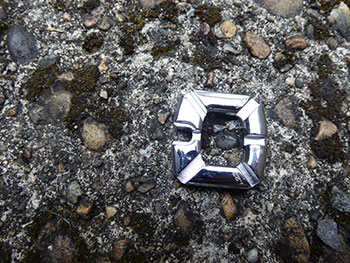
feedback sports, technical sponsors of the lotto soudal professional cycling team offer a wide range of individual bicycle tools, as well as a few toolkits that would assist the intrepid fellow or fellowess to maintain their bicycle(s) in as near immaculate condition as they were when they left the shop floor. distributed in the uk by edinburgh's 2pure, i received an 8mm handled allen wrench (or hex wrench as it is known across the pond), a couple of 3-way fixed allen wrenches, a square multi-sized spoke key and a t-handled three-way torx wrench. the quality of all is near shop standard, a far cry from those cheap little chain-rivet tools that were more inclined to break your fingers before they rivetted the chain.
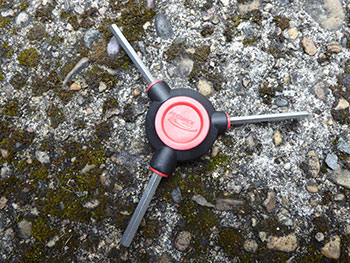
the 8mm wrench is an absolute merckx-send for those of us who have need of removing pedals such as those by crank bros. without multiple stab wounds resulting from the close proximity of a couple of chainrings, though i cannot deny a modicum of faff when using the spoke key. and though i've not used one, i think it quite cute that they refer to the chain rivet extractor as a chain pin press. however, perhaps the finest feature arriving with feedback's bike tools is their user-friendliness. there are arguably more expensive and impressive bike tools on the market, but those often confer an immediate need to study for a city and guilds mechanic's certificate.
for the cyclist keen to learn bike maintenance 101, the feedback range contains tools worthy of your investment and undoubtedly the ability to use them properly and still leave enough change for a large slice of carrot-cake with that double espresso.
tuesday 23 may 2017
 ..........................................................................................................................................................................................................
..........................................................................................................................................................................................................